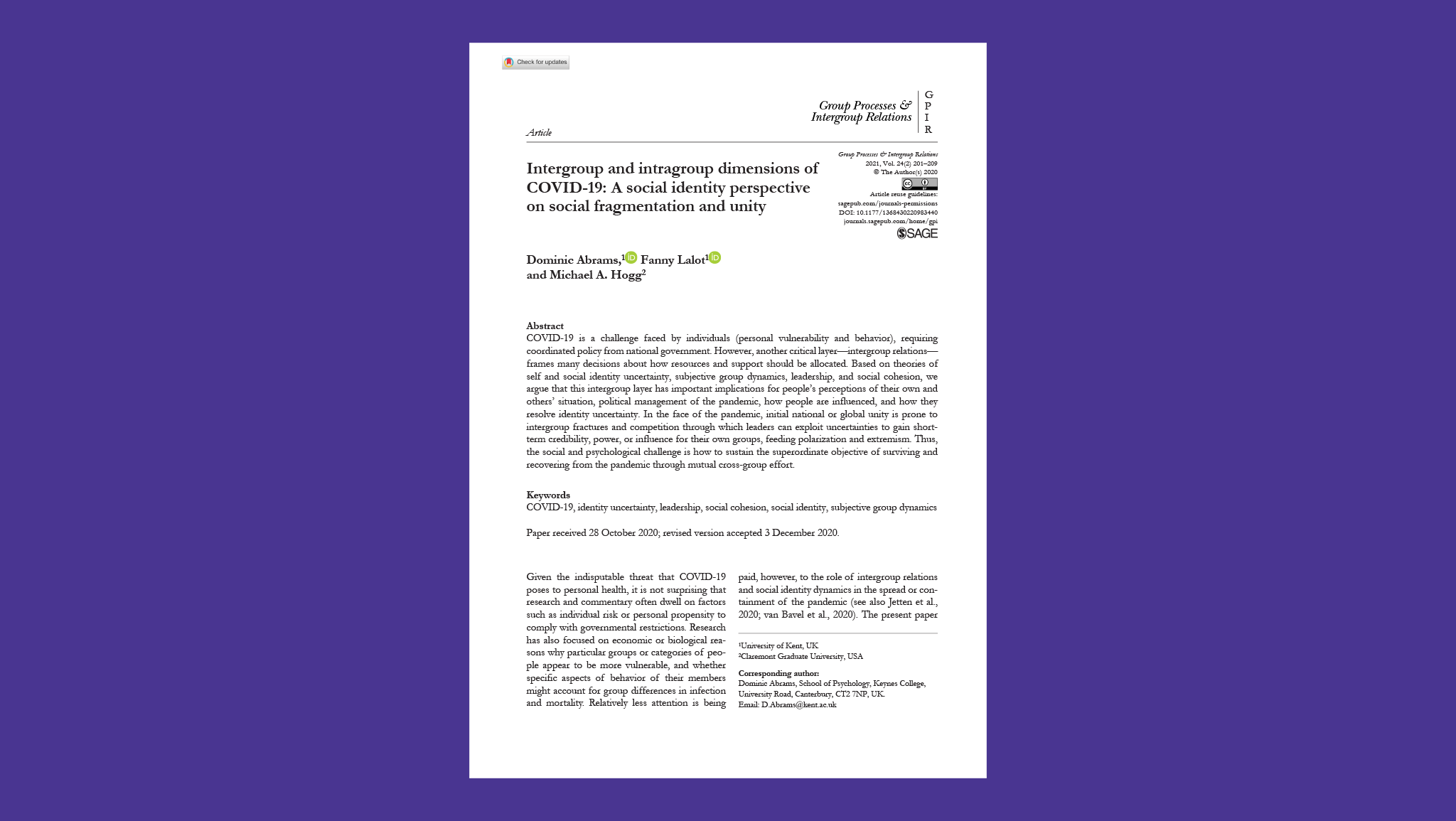Intergroup and intragroup dimensions of COVID-19: A social identity perspective on social fragmentation and unity
COVID-19 is a challenge faced by individuals (personal vulnerability and behavior), requiring coordinated policy from national government. However, another critical layer—intergroup relations—frames many decisions about how resources and support should be allocated. Based on theories of self and social identity uncertainty, subjective group dynamics, leadership, and social cohesion, this study argues that this intergroup layer has important implications for people’s perceptions of their own and others’ situation, political management of the pandemic, how people are influenced, and how they resolve identity uncertainty.

Intergroup and intragroup dimensions of COVID-19: A social identity perspective on social fragmentation and unity
April 2021
COVID-19 is a challenge faced by individuals (personal vulnerability and behavior), requiring coordinated policy from national government. However, another critical layer—intergroup relations—frames many decisions about how resources and support should be allocated. Based on theories of self and social identity uncertainty, subjective group dynamics, leadership, and social cohesion, this study argues that this intergroup layer has important implications for people’s perceptions of their own and others’ situation, political management of the pandemic, how people are influenced, and how they resolve identity uncertainty.
